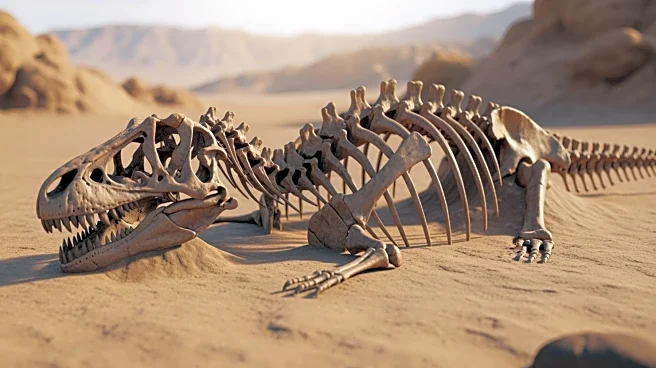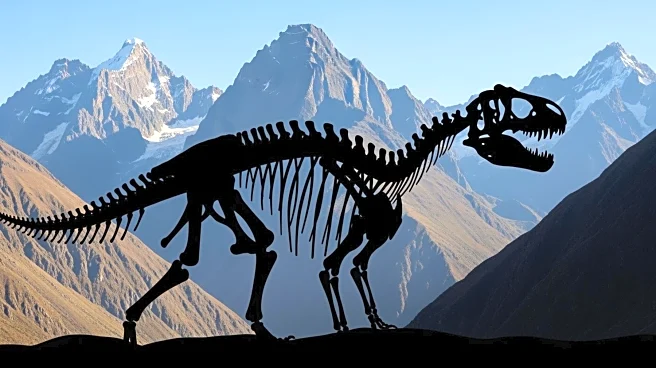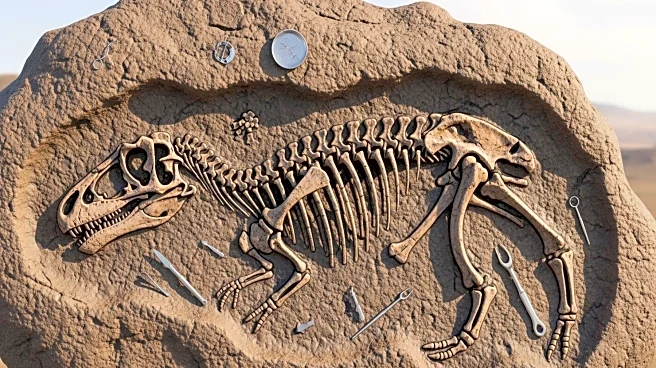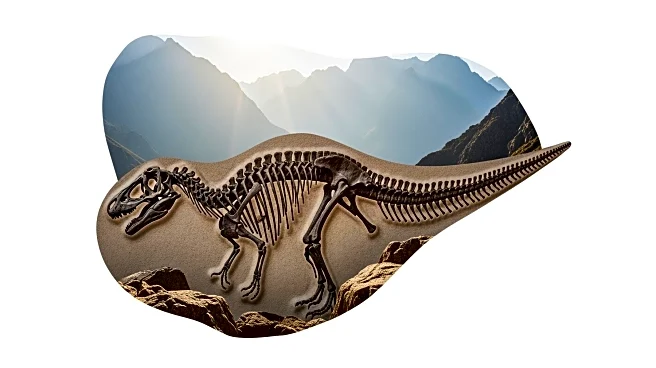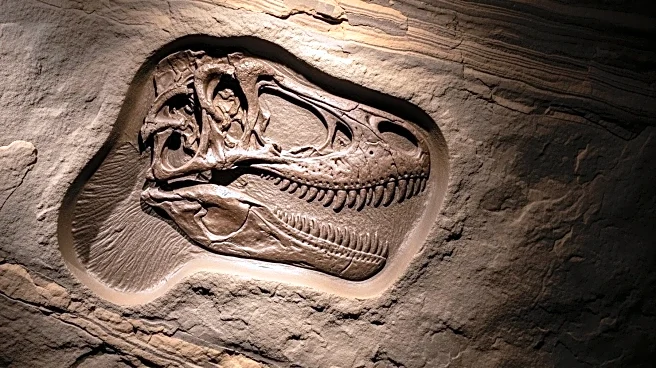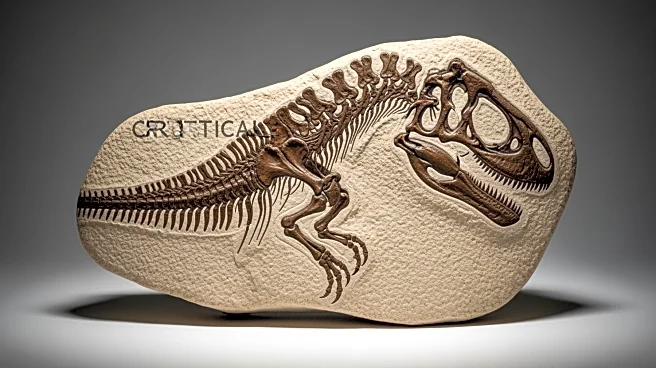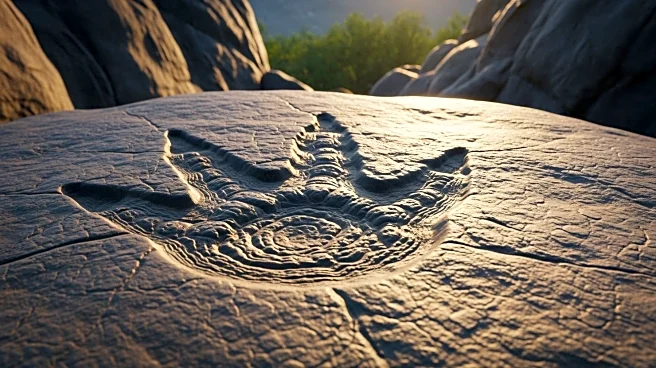What's Happening?
A new species of long-necked dinosaur, Huayracursor jaguensis, has been discovered in the Andes Mountains of Argentina. The nearly complete skeleton was found in the Santo Domingo Formation in La Rioja province. This species lived approximately 230 million
years ago during the Late Triassic period. The discovery provides insights into the evolution of sauropodomorphs, a group of herbivorous dinosaurs known for their large size and long necks. The neck bones of H. jaguensis show signs of elongation, suggesting an evolutionary step towards the long-necked sauropodomorphs found in later periods.
Why It's Important?
The discovery of H. jaguensis expands the understanding of dinosaur diversity and geographic distribution during the Late Triassic period. It highlights the evolutionary adaptations that occurred in response to drastic ecosystem changes, which led to diversification among various animal groups, including dinosaurs. This finding is significant for paleontologists as it provides evidence of early dinosaur evolution in South America, particularly in regions distinct from the well-studied Ischigualasto-Villa Unión Basin. The research contributes to the broader knowledge of how key traits like body mass and neck elongation emerged at the dawn of dinosaurs.
What's Next?
Further analysis of the H. jaguensis fossils will continue to shed light on the evolutionary history of sauropodomorphs. Researchers may explore other regions in the Andes for additional fossil evidence, which could provide more comprehensive insights into the early diversification of dinosaurs. This discovery may also prompt a reevaluation of existing theories regarding dinosaur evolution and adaptation during the Late Triassic period.
Beyond the Headlines
The discovery underscores the importance of paleontological research in uncovering the history of life on Earth. It also highlights the potential for new findings in less-explored regions, which can challenge and refine existing scientific narratives about the past.
